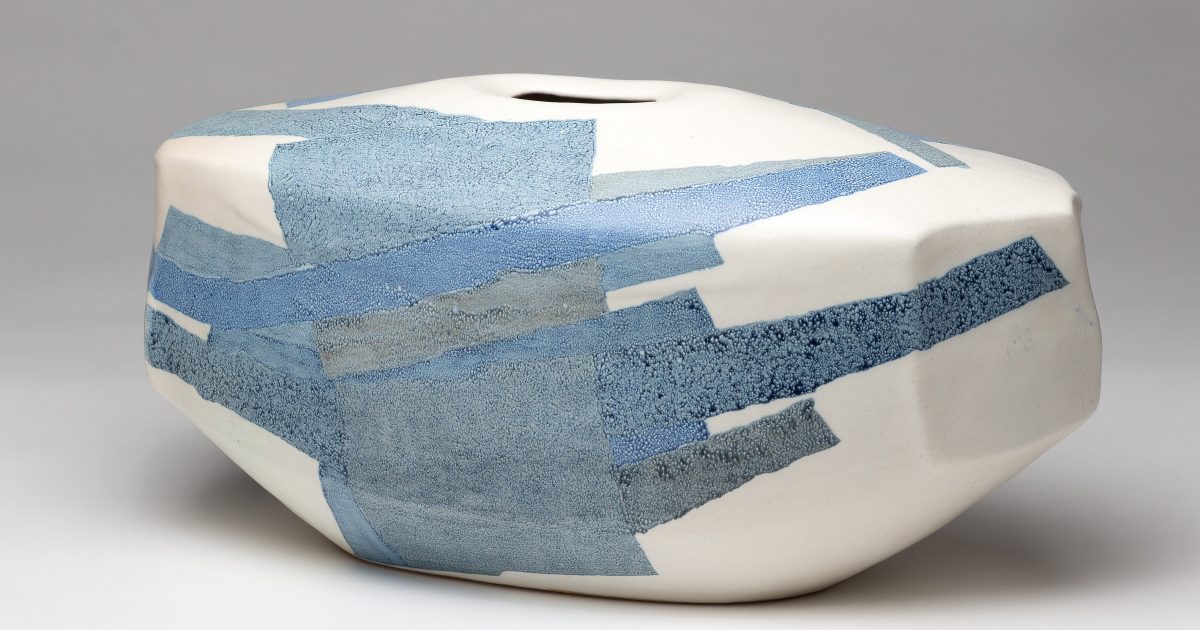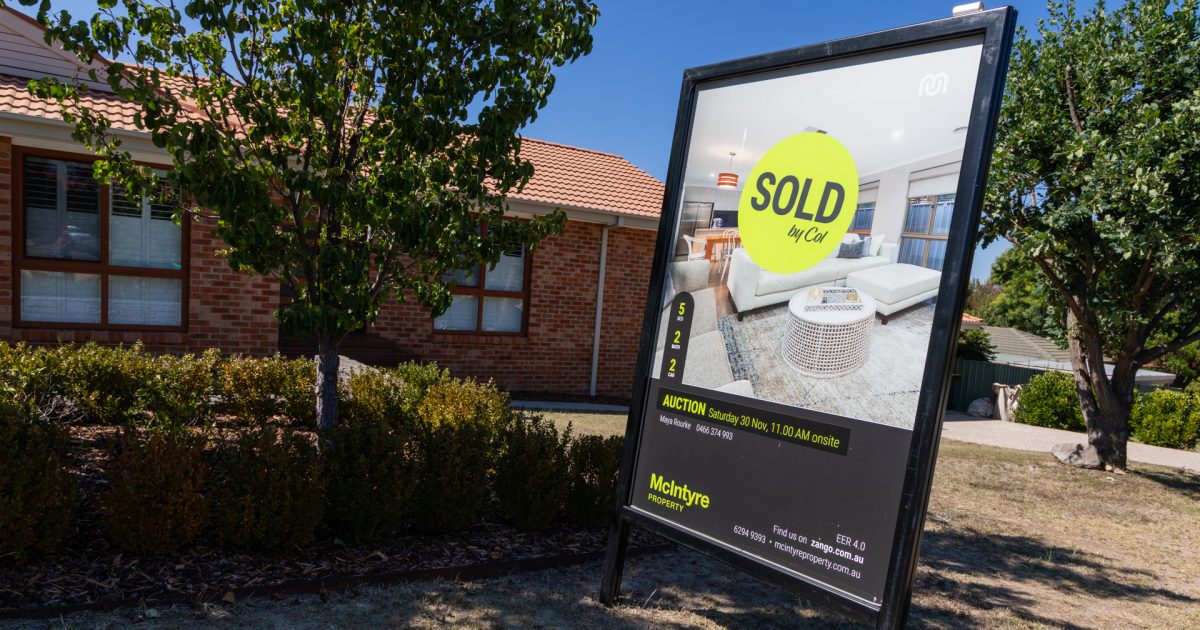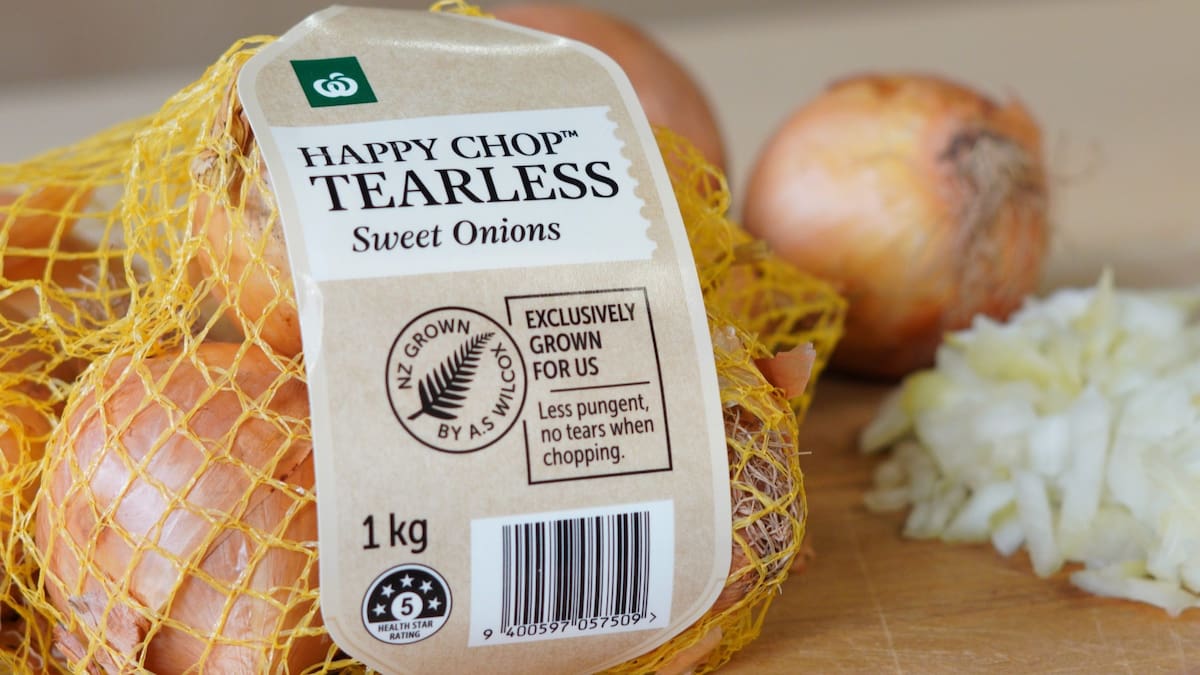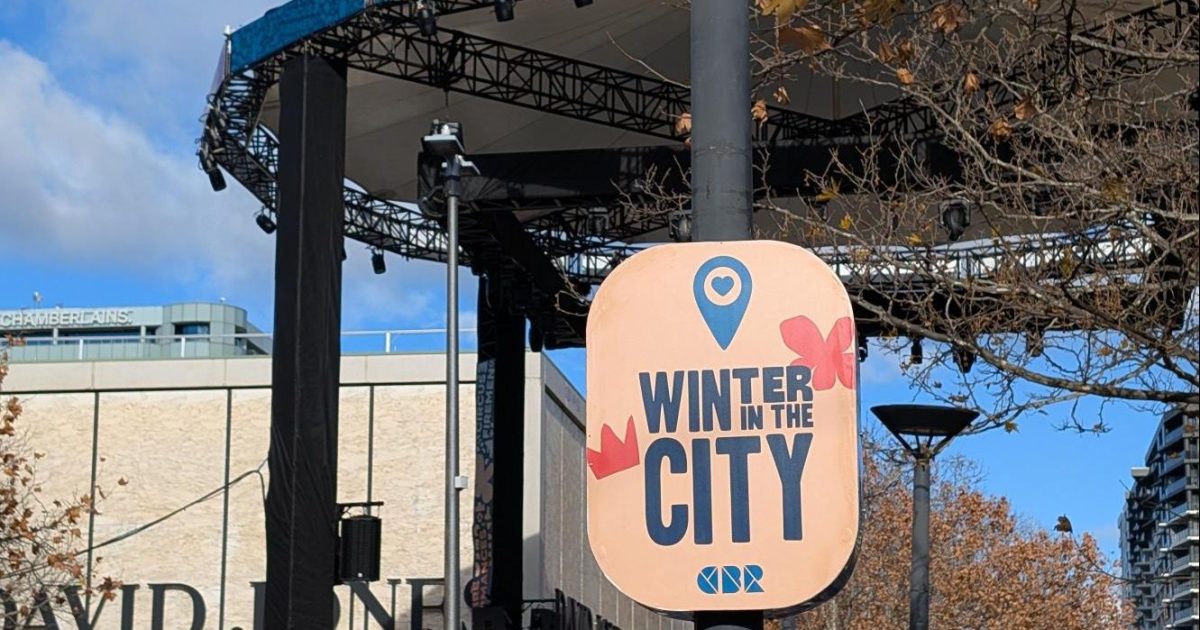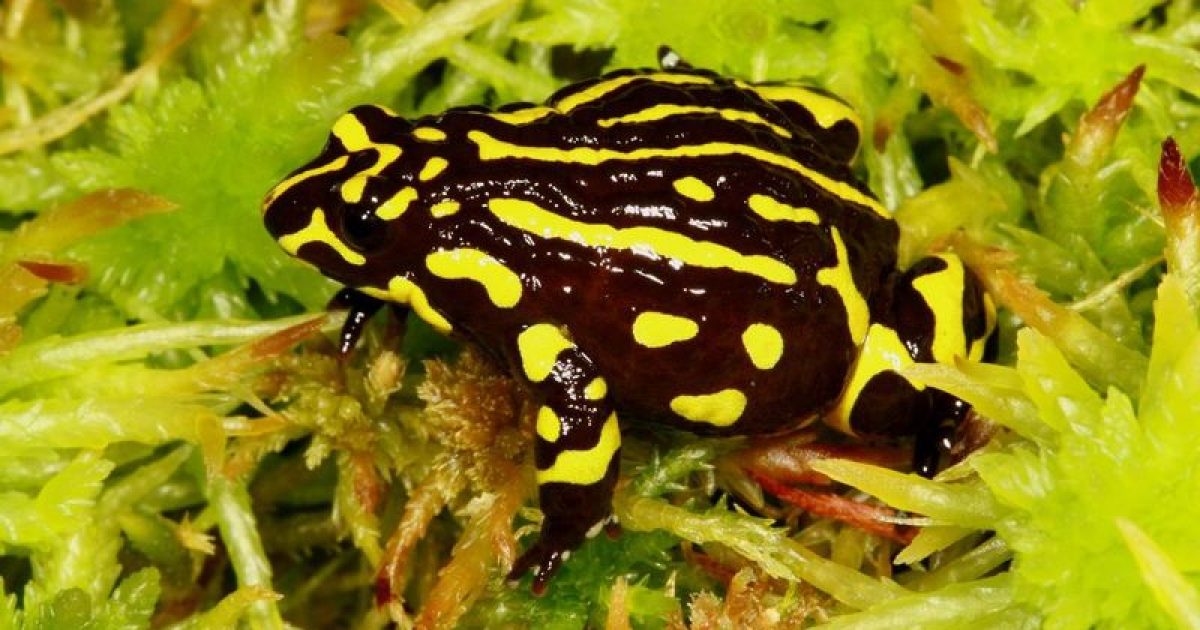Hiroe Swen, Surfing challenge, c.1992, glazed stoneware with wax resist decoration CMAG Collection. Photo: RLDI.
At 90, Hiroe Swen is one of Canberra’s greatest living treasures. A unique ceramicist, this woman of modest physical status casts a huge shadow across the Canberra art scene.
Internationally celebrated and with a major national reputation as one of the most important ceramic artists working in Australia, Hiroe Swen has called the Canberra region home for more than 50 years.
She has been the subject of retrospective and survey exhibitions, most memorably the wonderful exhibition at the Craft ACT Gallery. Hiroe Swen has figured highly in the Australian arts scene as an inspirational artist, a dedicated teacher and for her Pastoral Gallery in Bimbimbi, on the outskirts of Queanbeyan, which she ran with her partner Cornel Swen from 1973 to 2003.
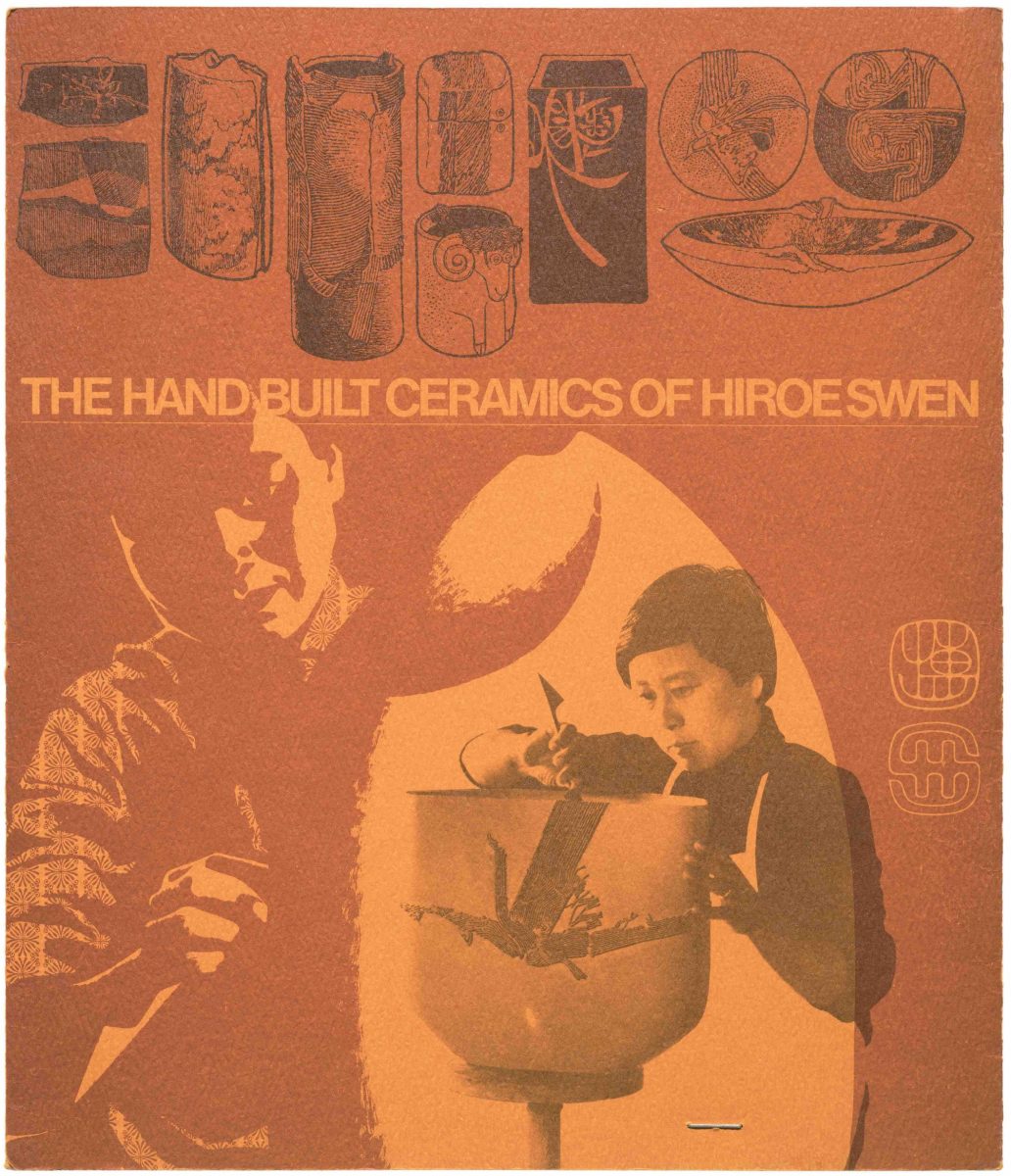
Cornel Swen (designer), The hand built ceramics of Hiroe Swen, 1974, exhibition catalogue, CMAG Collection. Photo: CMAG
Australian 20th-century pottery has been heavily influenced by the Japanese tradition, introduced mainly through the teachings of the British studio potter Bernard Leach. He created a hybrid vision that combined traditional European techniques, including slipware and salt glaze ware with Japanese, Korean and Chinese pottery conventions.
Hiroe Swen broke from this Anglo-Oriental technique and built her practice on the tradition of Japanese modernist ceramics. Most of her work consists of unique pieces that are coil-built vessel forms exploring the human condition as well as the natural environment. She made studio pottery rather than functional pottery that could be mass-produced. It is difficult to find a parallel with her art practice either in Japan or Australia.
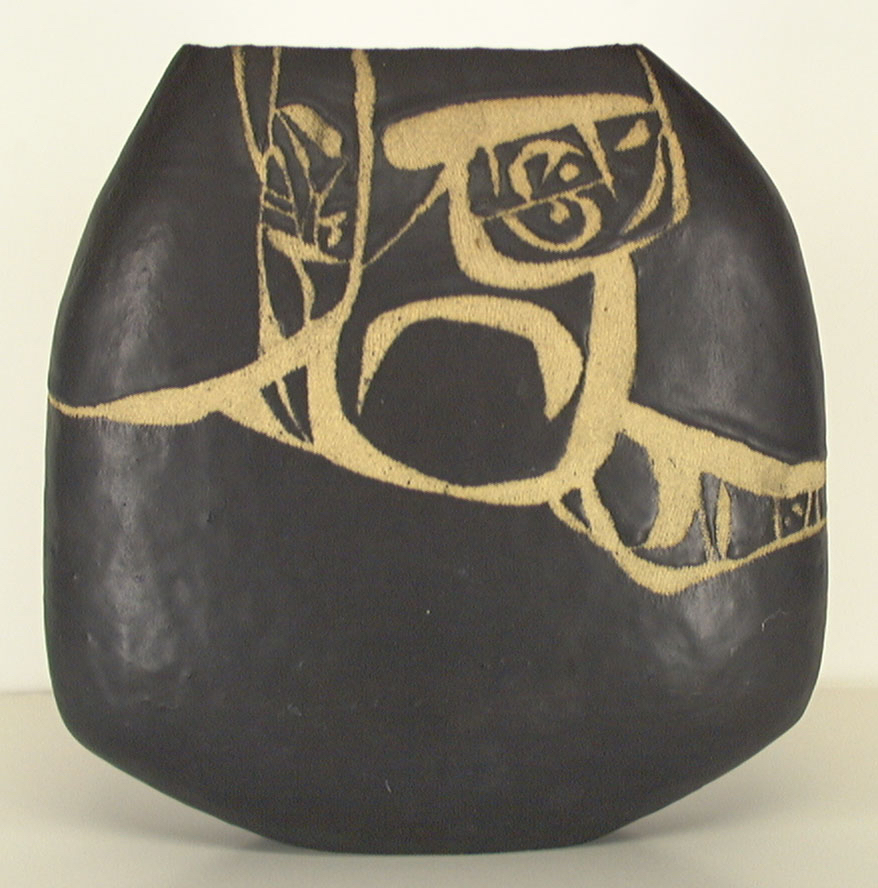
Hiroe Swen, Vase, 1974, glazed stoneware with inlaid decoration ANU Collection. Photo: CMAG
Her early Vase, 1974, where the glazed stoneware has inlaid decoration of Japanese forms or her Pisces, 1988, with its gold lustre, appear to point back to the traditions of Kyoto, a city where she was born and had an apprenticeship with the master potter Heihachiro Hayashi.
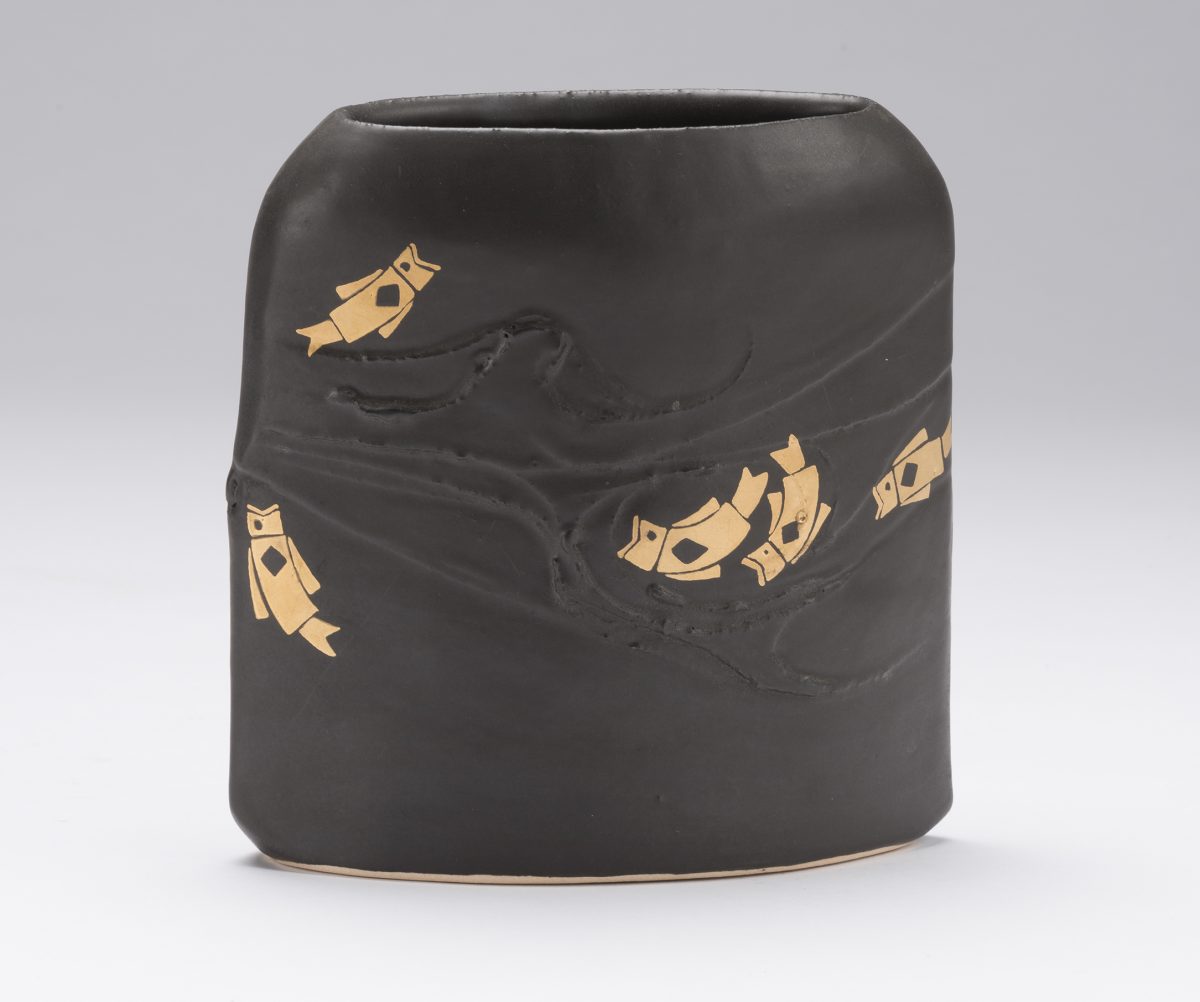
Hiroe Swen, Pisces, 1988, glazed stoneware with gold lustre and applied decoration Private Collection. Photo: CMAG
In other pieces in the exhibition, including Surfing Challenge, c.1992, and the wonderful Barcarolle, c.2015, her artistic voice has become much more pronounced. The selection of her work in the CMAG show is somewhat limited in number when we recall the richness of her output, although it does include samples of her work from 1966 through to the present.
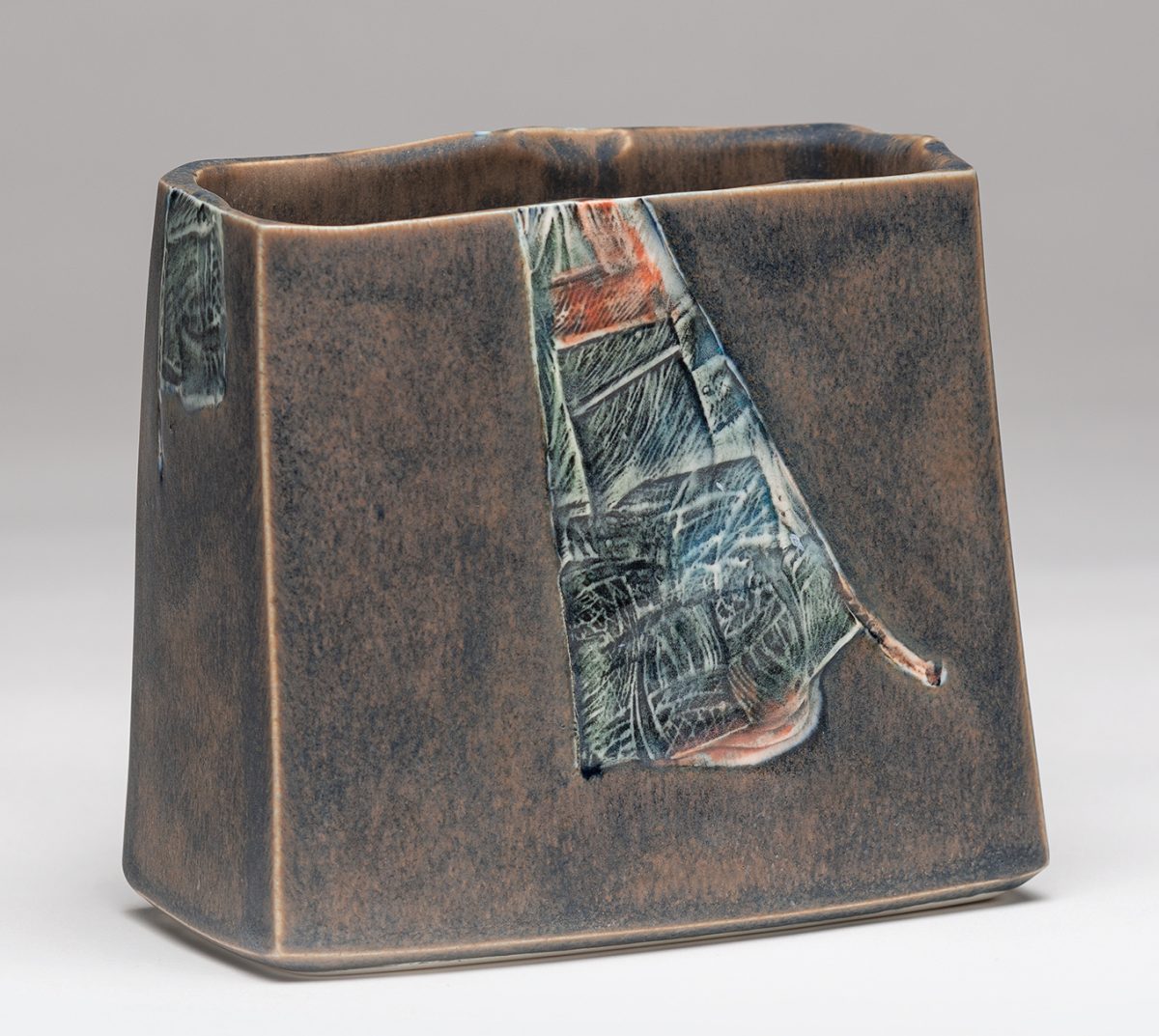
Hiroe Swen, Barcarolle, c.2015, glazed stoneware with inlaid stamped decoration, CMAG Collection. Photo: CMAG.
Why did Hiroe Swen come to Canberra? Here we encounter a love story that changed the artist’s life.
In 1966, she met in Kyoto the Dutch-born designer Cornel Swen who had been working in Australia. They married, and after two years in Kyoto, they came to Sydney and, in 1970, moved to a rural property in Bimbimbi, near Canberra. It was here that their parallel creative lives commenced and continued until Cornel died in 2022. Initially, Cornel was attracted to Canberra with a job as a senior graphic designer in the Commonwealth Department of Immigration, while Hiroe got a job teaching ceramics.
This exhibition is built around the idea of parallel careers. One of Cornel Swen’s designs for various government publications as well as catalogues of his wife’s exhibitions, including one for her Hand built ceramics show of 1974. It also includes some of his batik dye pieces, a technique that Hiroe had taught him. Some of these, including Baby possums swinging, c.1979-92, that show a somewhat whimsical interpretation of Australian native fauna set within a strong design framework.
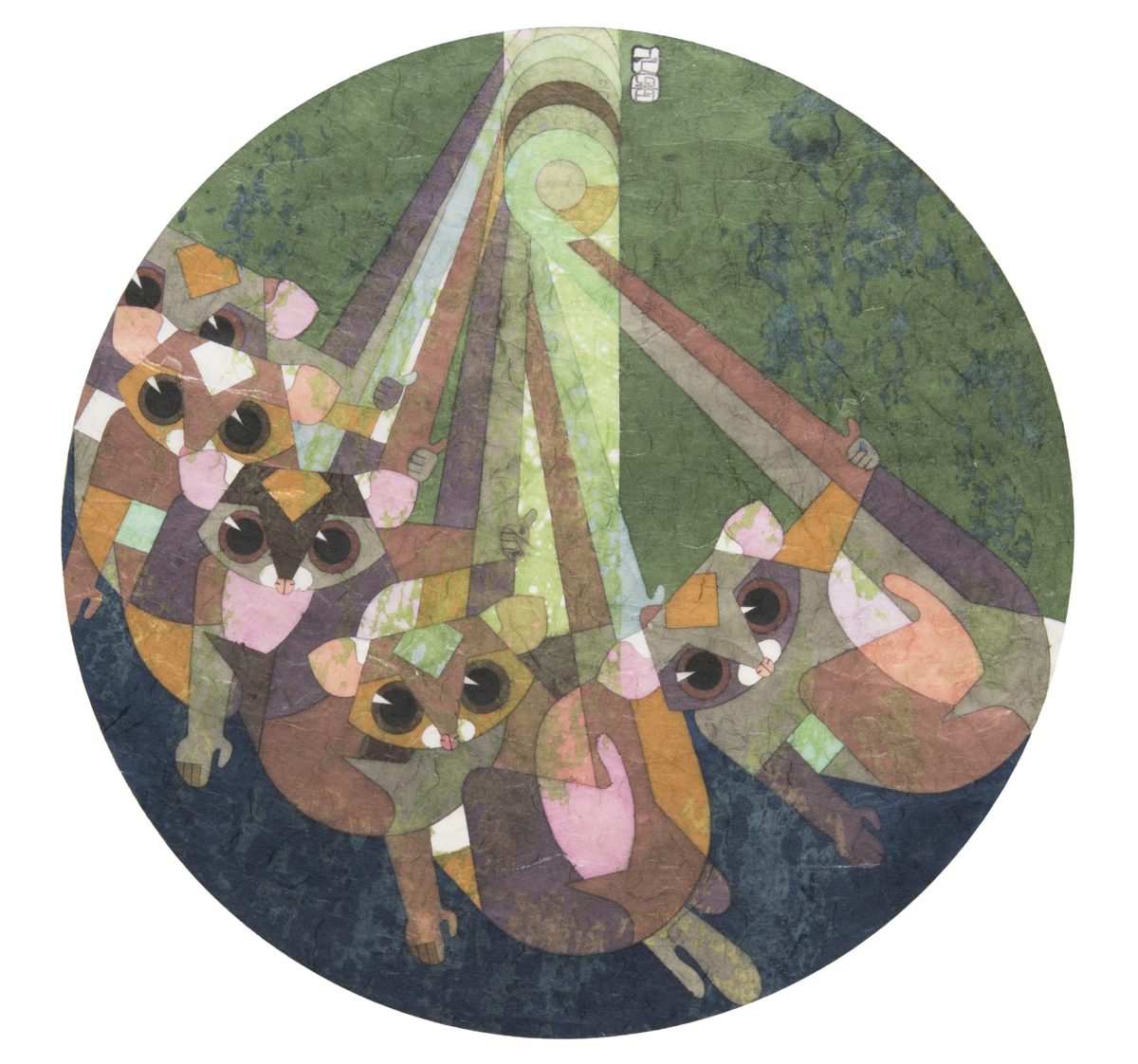
Cornel Swen, Baby possums swinging, c.1979-92, dye on handmade washi paper, Courtesy H Swen. Photo: CMAG
The highlight is undoubtedly Hiroe’s ceramics – her noble sculptural forms that, at least for me, convey a range of humanist concerns. Although, on occasion, Hiroe Swen may become preoccupied with questions of design, most of her pieces she treats like a canvas on which, in a non-literal way, she conveys her concerns with the tragedy of life, our threatened environment and the fragility of our existence.
For several generations, Canberrans have visited the Pastoral Gallery and experienced the joy and commitment of this creative couple. The exhibition at CMAG gives us a nostalgic glimpse into that enchanted world.
Hiroe and Cornel Swen: Making a Creative Life is at Canberra Museum + Gallery, cnr London Circuit and City Square, Canberra City, runs until 16 March 16, 2025, Monday to Friday from 10 am to 4 pm, and Saturday and Sunday from 12 pm to 4 pm.


